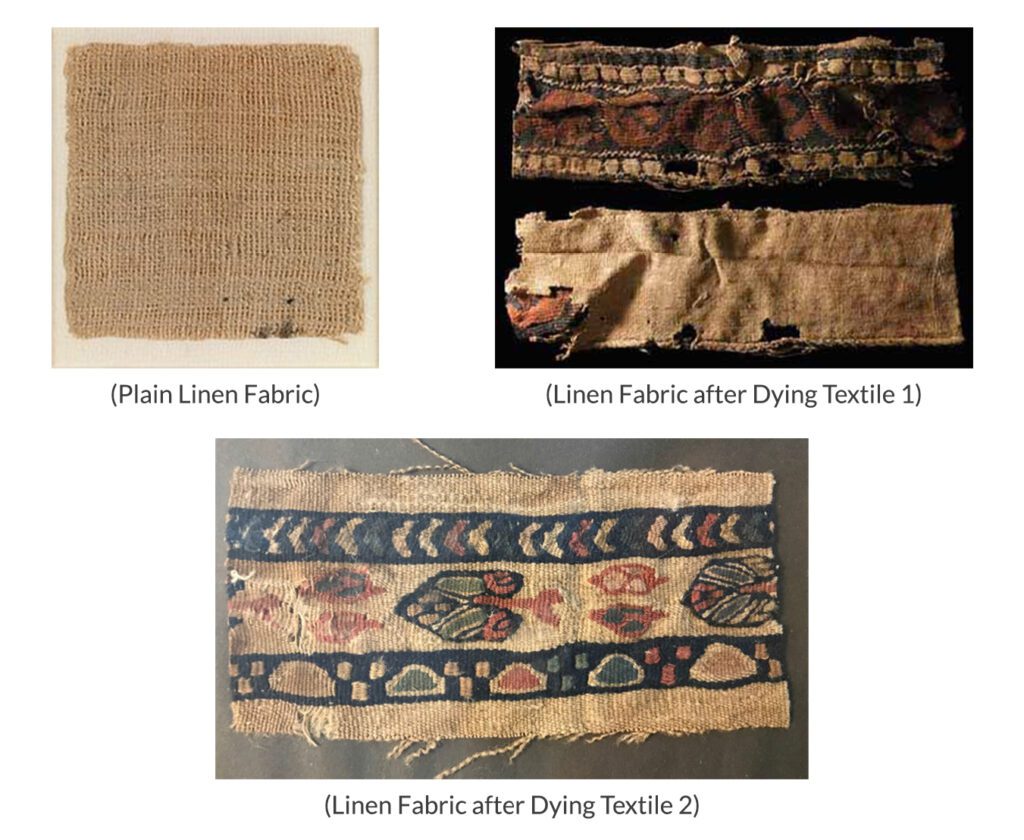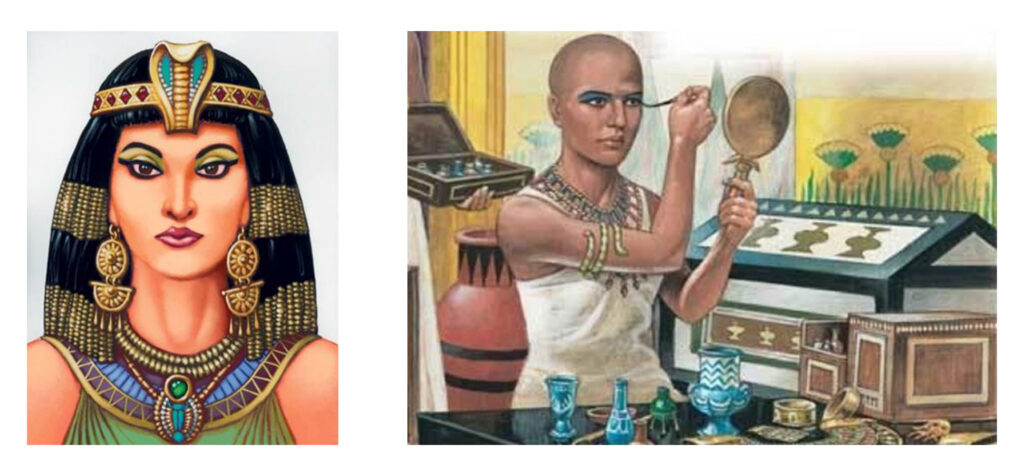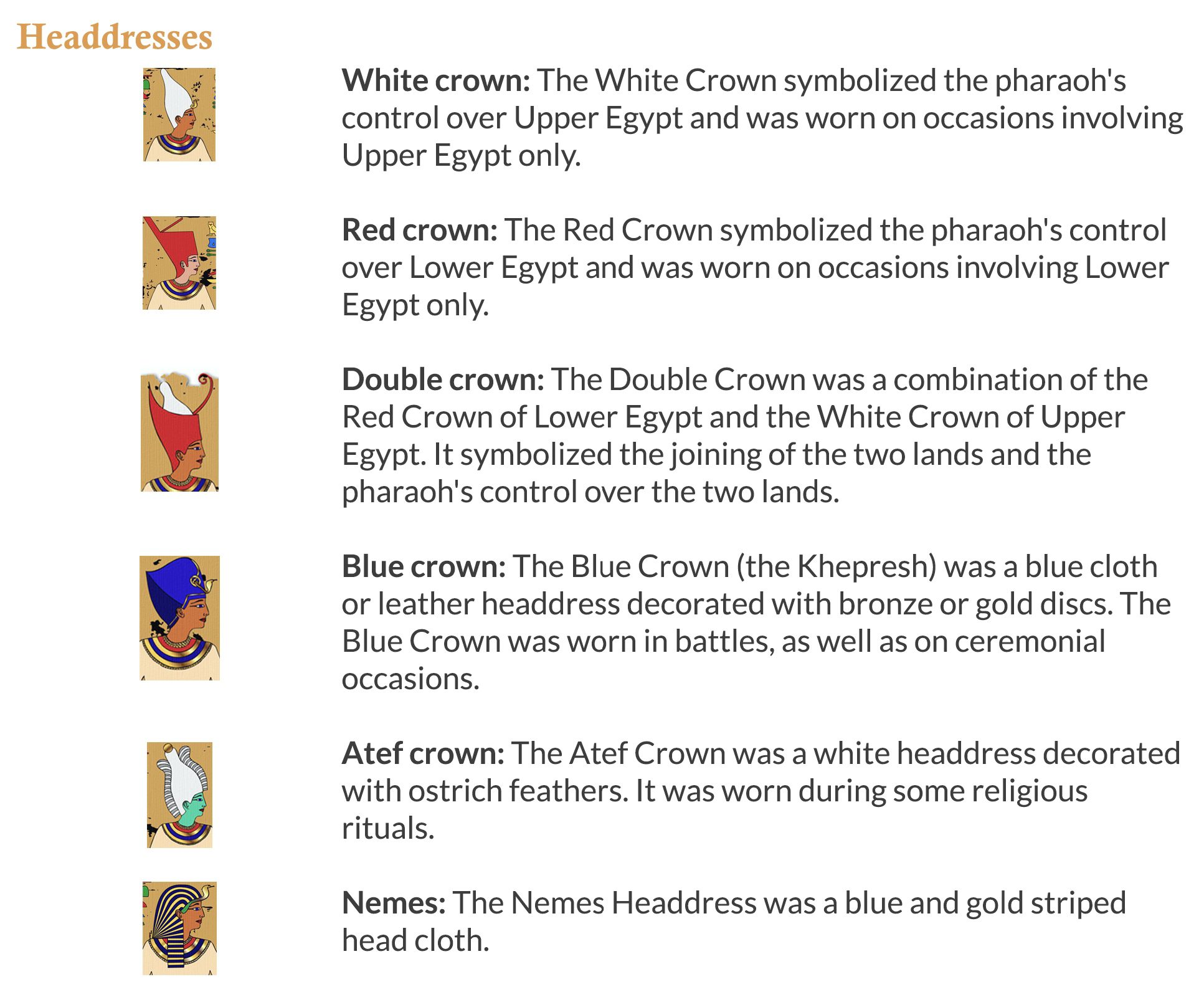Egypt is a rustic country which is linking northeast Africa with the Middle East, date to the time of the pharaohs is called the Ancient Egyptian Era.
Garments of Ancient Egyptian Fashion were made of locally-sourced materials. Pastoral nomads created clothes from their placentals. In the earliest agricultural societies, the ancient Egyptians wore lightweight garments made of linen. Linen is formed from flax — a plant that was grown along the Nile.

Clothing For Men:
All men wore a wrap-around skirt, tied at the waist with a belt. Sometimes the fabric was wrapped around the legs also. The length of the skirt varied looking at the style of the time. At the same time as the Old Kingdom’s men wore short, while in the Middle Kingdom’s men wore calf length. During the New Kingdom period, it had been fashionable to wear a pleated garment.
Rich Egyptian men were able to afford the most effective quality linen which was very fine and almost see-through. They also wore as much jewelry as they could afford and decorated their clothes. They also wore headdresses for special occasions.

Apron/ Schenti: An apron was an outer garment worn by men. It was common throughout all the time periods. It was made of linen or leather and fixed with a belt.
This apron was called “Schenti”. It was decorated with side-pleating and differed clothes of Pharaoh and the elite from the clothes of ordinary Egyptians.

Wrapped skirt: The traditional male garment was wrapped around the hips with the ends hanging down in folds at the front of the body. Initially manufactured from leather or hide, and eventually in linen.

Tunic: The tunic was a long rectangular piece of fabric with a hole in the center for the head. Its open sides might be secured with a belt and it always extended just past the waistline.
The tunic was usually worn with “Schenti”. The sides of the Tunic were sewn together, forming short sleeves that were often starched so that they stuck outward, making the shoulders appear broad. Like other linen garments, the tunic was bleached white which was decorated with pleats and folds.

Straps: Priests were permitted to wear only linen garments and white papyrus sandals when tending a god. Neither leather nor wool was allowed to be ritually pure. From the Old Kingdom, mortuary priests wore leopard skin on one of their shoulders over their linen garments.

Cape-like Garment: The cape shoulder was a rectangle twisted Garment. Once the ends were twisted, they knotted to create ties, which were accustomed to the position of the cape.

Loincloth: A loincloth was a one-piece garment, sometimes kept in situ by a belt. It covers the genitals and, a minimum of partially, the buttocks. It was worn as an undergarment or swimsuit in societies that disapproved of genital nakedness. It was also utilized in societies where no other clothing was required or wanted. This was often worn as an only garment and made out of bark fibers, leather, or cloth. Different cultures wore loincloths in different ways and were re-reserved for different classes.

Clothing For Women:
During the Old, Middle, and New Kingdom, Ancient Egyptian women mostly wore a straightforward sheath dress called a “Kalasiris”. The dresses had one or two straps and were worn right down to the ankle, while the upper edge had worn above or below the breasts. The length of the dress denoted the class of the wearer. Beading or feathers were also used as ornamentation on the dress. Sometimes, women wore shawls, capes, or robes over their dresses. The shawl was a chunk of fine linen cloth around 4 feet wide by 13 or 14 feet long. This was mostly worn pleated as well. Until the mid-eighteenth Dynasty women wore a tight-fitting “Sheath” dress, an easy garment that falls from slightly below the breasts to merely above the ankles, being held up by two shoulder straps. The straps of the dresses cover the breasts without being loose-fitted. Also when women are shown walking, sitting, or kneeling, the dress still clings to the outline of the body as if elasticated.

Clothing For Children:
Children wore no clothing until 6 years old. Once they turned six years old they were allowed to wear clothing to guard them against the dry heat. When they grew up, they wore equivalent styles as their parents.

Makeover:
Embalming allowed the development of cosmetics and perfumes. The perfumes of Egypt were not only the most numerous but also the foremost sought and the costliest of antiquity, which used them extensively. The Egyptians used makeup most of all the traditional people. Nails and hands were painted with henna.
Black kohl, which was used for marking eyes obtained from galena. Eye shadow was made from crushed malachite. Red lipstick, which was applied to lips, was made of ochre. These products were mixed with fat to form them compact and to preserve them. Both men and ladies wore galena or malachite eyeliner to shield the eyes and enhance their beauty.

Accessories:
The Egyptian nobility preferred bracelets, necklaces, amulets, pendants, belts, and hair beads. They loved pieces designed with scrolls, tigers, scarab beetles, winged birds, jackals, antelopes, and tigers. One of the most interesting materials that were commonly used for fashion was colored glass.
A popular hairstyle among the kids was the side-lock, an unshaped length of hair on the right side of the head. Even though children wore no clothes, they wore jewelry on the ankle, hand, neck, and hair.

 Necklaces and Collars:
Necklaces and Collars:
The “Usekh” or “Wesekh” was a personal ornament, used collar or necklace, and familiar to many among the ancient Egyptian elites. Deities, women, and men were portrayed wearing this jewelry. The “Usekh” was wrapped around and held by the neck and shoulders. It was typically adorned with closely placed rows of colored stone beads or made of metal entirely. The collars were connected with clasps of gold.

Footwear of Ancient Egyptians:
Footwear was the same for both males and females. It was called sandals that were made of leather. For the priestly class people, the sandals were made from papyrus. Usually, Egyptians were barefoot, they wore sandals during special occasions, or sometimes when their feet might get hurt.

#Fashion_History_of_Ancient_Egyptian
[Source of Images: Google, Wikie, etc.]
